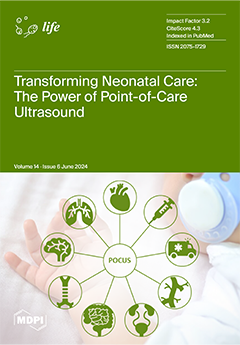The production of citric acid, a vital agricultural commodity utilized across various industries such as food, beverages, pharmaceuticals, agriculture, detergents, and cosmetics, predominantly relies on microbial fermentation, with
Aspergillus niger accounting for approximately 90% of global production. In this study, we aimed to
[...] Read more.
The production of citric acid, a vital agricultural commodity utilized across various industries such as food, beverages, pharmaceuticals, agriculture, detergents, and cosmetics, predominantly relies on microbial fermentation, with
Aspergillus niger accounting for approximately 90% of global production. In this study, we aimed to optimize the key factors influencing citric acid production, with a focus on strains, fermentation techniques, and carbon sources, particularly sugarcane molasses.
A. niger, sourced from the Botany department/Biotechnology laboratories at Govt. College of Science, Lahore, was employed for citric acid production. The process involved inoculum preparation through spore collection from 3 to 5 days of cultured PDA slants. The fermentation medium, comprising cane molasses with a 15% sugar concentration, was meticulously prepared and optimized for various factors, including magnesium sulfate, potassium ferrocyanide, time of addition of potassium ferrocyanide, ammonium oxalate, and calcium chloride. Our optimization results shed light on the significant impact of different factors on citric acid production. For instance, the addition of 0.4 g/L magnesium sulfate led to a maximum yield of 75%, while 2 g/L potassium ferrocyanide, added at 24 h, achieved a yield of 78%. Remarkably, ammonium oxalate, at a concentration of 10 g/L, resulted in a notable 77% yield. Conversely, the addition of calcium chloride exhibited negligible effects on citric acid production, with the control group yielding more at 78%. Our study underscores the potential for optimizing factors to enhance citric acid production by
A. niger in submerged fermentation. These findings highlight the pivotal role of magnesium sulfate, potassium ferrocyanide, and ammonium oxalate in augmenting citric acid yields while emphasizing the minimal impact of calcium chloride. Ultimately, these insights contribute to advancing our understanding of microbial citric acid biosynthesis, providing valuable implications for industrial applications and future research endeavors.
Full article






